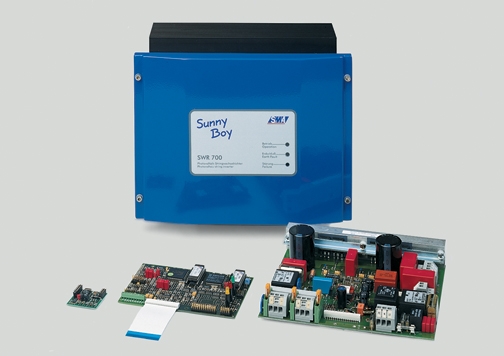Part 5: How does SMA stack up against module-level systems?

The long haul
Perhaps the most concerning aspect of most module-level power electronics is that long-term reliability has not been established—most companies are too young to prove reliability. Without sufficient operating history, Enphase and SolarEdge can’t confirm how their devices will perform over their estimated useful life, leaving O&M a guessing game.
MPLE warranties don’t add up
While Enphase and SolarEdge’s warranties may seem comprehensive, they leave gaps upon closer review. Enphase’s warranty, in particular, doesn’t protect against sizing mismatch, cabling issues, compatibility problems, spare parts storage needs, etc.
Moreover, Enphase and SolarEdge warranties actually create problems of their own, greatly affecting your bottom line. Due to the additional components in Enphase and SolarEdge systems (typically 30 devices, compared to just one Sunny Boy TL-US with Secure Power Supply), warranty servicing costs are significantly higher. That’s because they require more hours on the roof; larger crew sizes; extra crew equipment, including personal protection equipment; and increased component costs such as grounding clamps.
The increased—and continual—servicing of Enphase and SolarEdge systems result in more liability and risk exposure for the installer. Important considerations are the safety of your service crews; integrity of your customer’s roof; the mechanical and structural integrity of the array racking; and the increased potential for installation errors and damage to modules and surrounding property.
Service expenses can destroy profit margins

The Sunny Boy 700, which hit the market in 1995, is considerably older than many of today’s inverter companies.
Installers understand the importance of reliability when it comes to MLPE. Given a 5 kW system and $400 estimated truck roll cost, even 5-percent failure rate will exposes installers to $400,000 in service costs within the first year of operation, given 1,000 installs that year. This number grows exponentially over the life of those systems. For installers with less volume (10-15 systems per month), annual service costs can still reach $14,000 for failed module-level components. At the end of 10 years, those truck roll costs amount to $4,000,000 and $120,000, respectively.
Increased uptime with SMA, all the time
Significantly lower failure rates are not the only contributing factor to SMA’s unparalleled system uptime. Should issues arise, SMA ships replacement inverters within 24 hours of the service call, often the same day, while competitors only guarantee a new device within 48 hours of the old one being received at their service center.
All five parts
Miss any of the other four parts of this series? Part 1 explored the added value of the Sunny Boy TL-US with Secure Power Supply while Part 2 discussed the additional labor costs associated with module-level power electronics. Part 3 and Part 4 compared shade mitigation technology and system costs of module-level power electronics and the Sunny Boy TL-US with Secure Power Supply, respectively.
Still looking for more information on why the Sunny Boy TL-US with Secure Power Supply is quickly becoming the most popular residential PV solution? Attend a Solar Academy webinar for more on this inverter family.




Feel free to contribute!